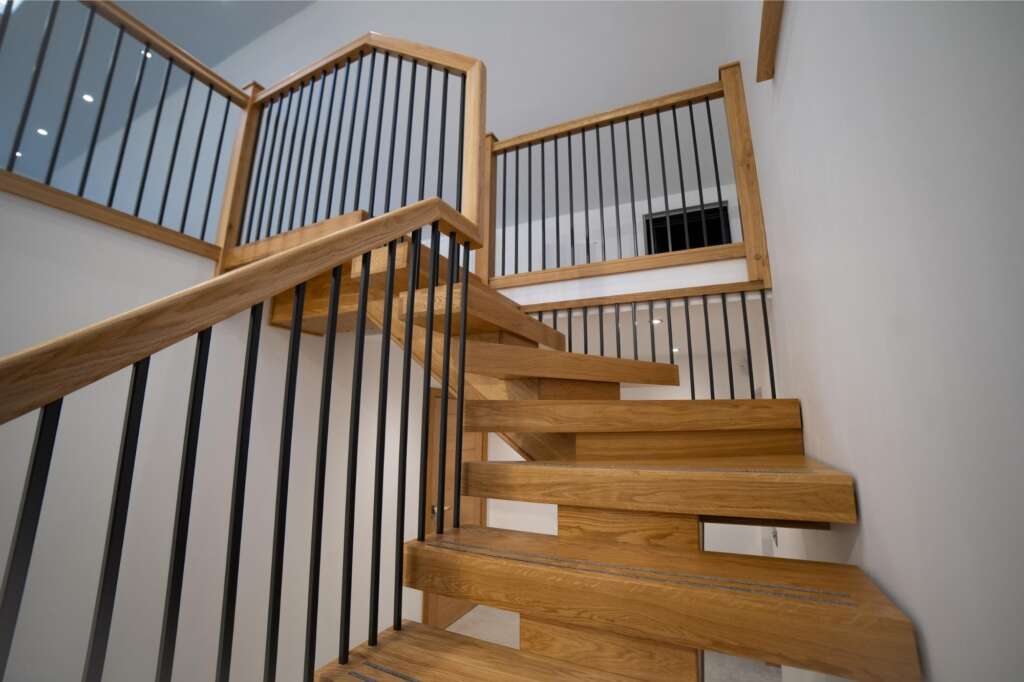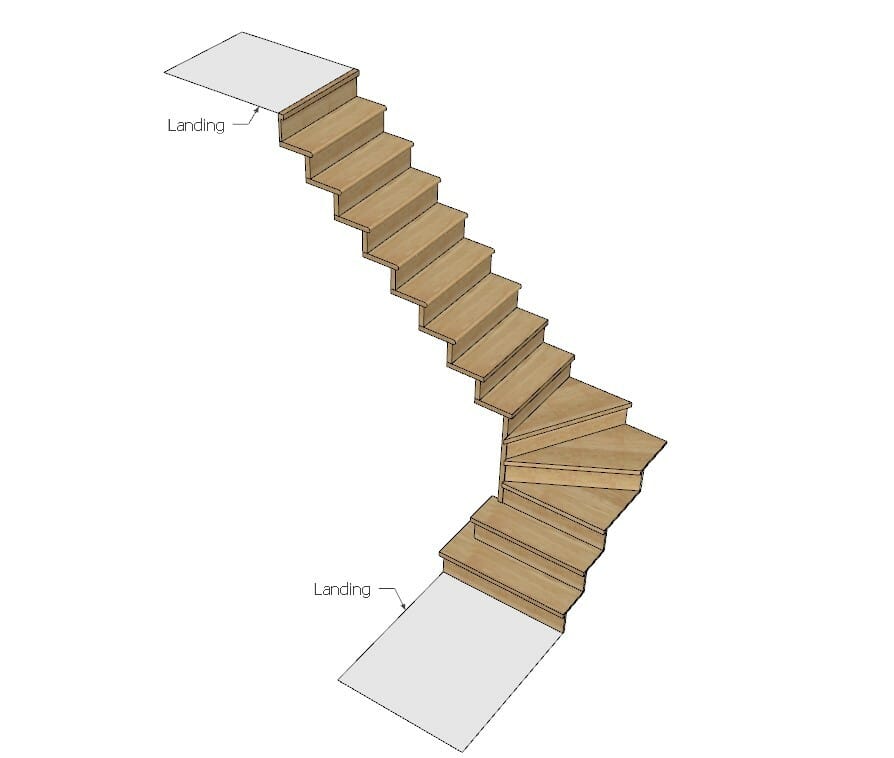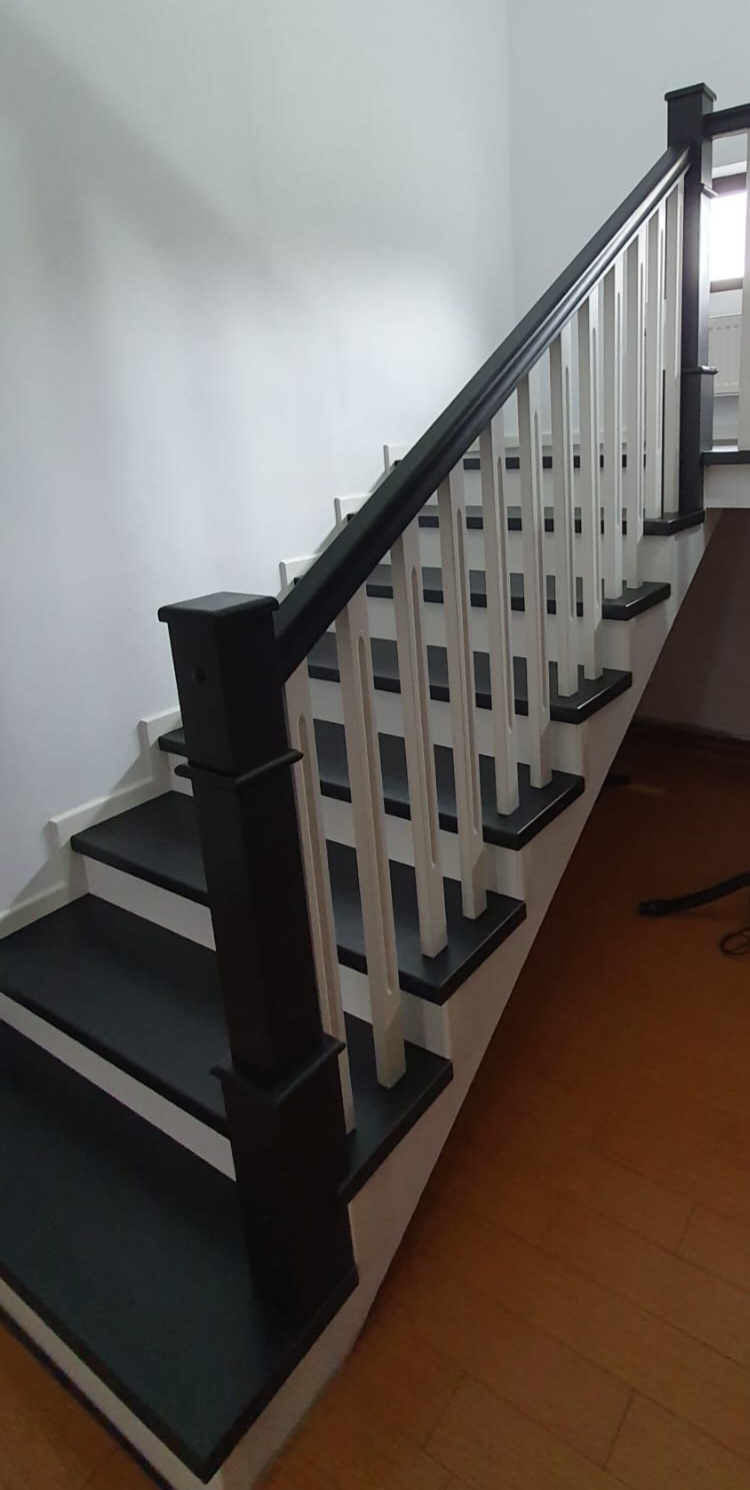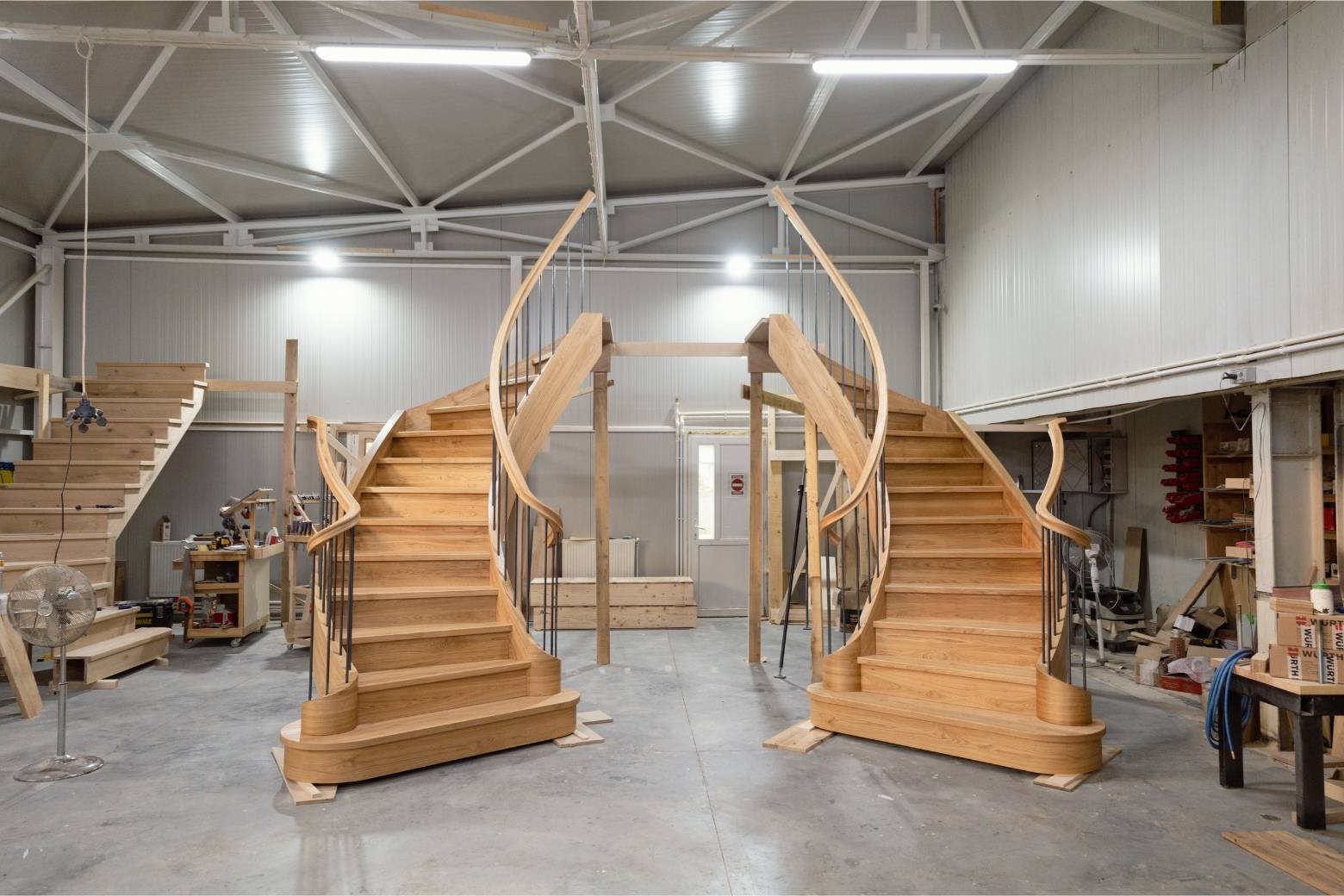How to clean wooden stairs safely and effectively
Cleaning wooden stairs may seem like a simple household chore, but any homeowner who owns a timber staircase knows it requires extra care. The natural finish, risk of scratches, and potential for water damage mean the wrong cleaning method can reduce both the beauty and lifespan of your staircase.
Regular cleaning is about more than just aesthetics – it’s also a matter of safety. Dust, pet hair, and debris can make the steps slippery, increasing the risk of falls. Clean stairs not only look better but are also safer and more comfortable to use.
The good news is that with the right approach, your wooden staircase can remain a stunning feature for decades. In this guide, we’ll show you how to clean wooden stairs step by step, using safe and effective methods.

Why wooden stairs require special care
Wooden stairs are a premium feature in any home, whether crafted from oak or walnut. But their natural beauty comes with the need for mindful maintenance.
Moisture sensitivity
Unlike metal or stone stairs, wood is porous and can absorb moisture. Prolonged exposure to water can cause swelling, warping, or staining. Even small spills, if left unattended, can leave marks on the treads or risers.
Risk of scratches
The finish on wooden stairs is designed to protect the surface, but it can still be scratched by grit, dirt, or improper cleaning tools. High-traffic areas, especially the centre of each tread, are most vulnerable.
Common issues in UK homes
- Dust and debris build-up: In homes with children or pets, dust can accumulate quickly, dulling the surface.
- Scuff marks and scratches: Shoes, toys, and furniture being moved up and down can leave marks.
- Fading finish: Without care, the protective layer can wear away, leaving wood exposed.
UK climate considerations
The UK’s variable humidity and temperature changes can subtly impact wood over time. In winter, central heating can dry timber, while summer humidity can cause slight expansion. A good cleaning and care routine helps mitigate these natural changes, keeping your staircase stable and looking fresh.
Tools and products you’ll need
Before you start, gather the right tools and products. Using unsuitable equipment can cause more harm than good.
Cleaning tools
- Soft-bristle broom – Gentle on wood, ideal for sweeping dust without scratching.
- Microfibre cloths – Excellent for lifting dirt without leaving streaks.
- Vacuum with soft brush attachment – Perfect for reaching corners and edges.
Cleaning solutions
- pH-neutral wood cleaner – Protects the wood’s natural oils and finish.
- Mild homemade cleaners – A few drops of gentle washing-up liquid diluted in warm water can work well.
- Avoid bleach or ammonia – These can damage the finish and discolour wood.
Protective equipment
- Gloves – Protects your skin from cleaning agents.
Non-slip footwear – Essential for safety when moving up and down the stairs during cleaning.
Step-by-step guide to cleaning wooden stairs
A systematic approach ensures every part of your staircase is cleaned safely and effectively.
Step 1 – Dust and sweep
Start at the very top of the staircase and work down. Use a soft-bristle broom or vacuum with a soft brush attachment to remove dust, grit, and hair. Pay extra attention to corners where dirt can collect. Sweeping before wiping prevents small particles from scratching the finish.
Step 2 – Wipe with a damp cloth
Lightly dampen a microfibre cloth and wipe each tread and riser. The cloth should be just moist, not wet. Work in small sections, wiping along the grain of the wood to avoid streaks. Excess water can seep into the joins and cause damage.
Step 3 – Remove stains or scuff marks
- Stains: Apply a diluted pH-neutral cleaner to a soft cloth and gently rub the stain. Avoid scrubbing too hard.
- Scuff marks: A small amount of appropriate wood polish or cleaner can help buff away lighter marks.
Step 4 – Dry thoroughly
After wiping, dry each step immediately with a clean microfibre cloth. This is a crucial step to prevent moisture damage.
Step 5 – Polish (optional)
If you want to restore extra shine, use a wax or polish recommended for your staircase’s wood type. Apply sparingly and buff to a smooth finish. This step also adds a protective layer to the surface.
Common mistakes to avoid
Even with the best intentions, certain mistakes can damage wooden stairs:
- Using too much water – This can seep into the timber, causing warping or discolouration.
- Harsh chemicals – Products like bleach or ammonia can strip the protective coating and damage the wood fibres.
- Abrasive pads or brushes – These can leave permanent scratches.
- Infrequent cleaning – Allowing dust and debris to build up can dull the finish and make cleaning harder.
Ignoring small repairs – Minor chips and scratches can become bigger issues if left untreated.
- Using too much water – This can seep into the timber, causing warping or discolouration.
Maintenance tips to keep wooden stairs looking new
Consistent maintenance helps preserve your staircase’s appearance and structural integrity:
- Weekly: Sweep or dust to remove grit and debris.
- Monthly: Carry out a more thorough cleaning, following the steps above.
- Seasonally: Apply polish or oil to nourish the wood and maintain its finish.
- Protect high-traffic areas: Use stair runners or mats to reduce wear.
- Prompt repairs: Fix chips or scratches early to avoid long-term damage.
For more detailed maintenance advice, see our full guide on caring for your oak staircase.

When to call a professional
There are times when professional attention is the best choice:
- Deep scratches that cannot be removed with normal polishing.
- Water damage that has stained or warped the wood.
- Loose steps or handrails that compromise safety.
- Refinishing needs when the protective coating has worn away.
If your staircase features a specialist design—such as a metal frame with timber treads—professional care ensures each material is treated correctly.
Conclusion
Cleaning wooden stairs is simple when you use the right methods and tools. Regular care keeps them looking beautiful, safe, and durable for many years.
If you ever have doubts about the best cleaning method or notice signs of damage, don’t hesitate to seek expert help.
👉 Contact us today to arrange professional cleaning, maintenance, or restoration tailored to your staircase.


